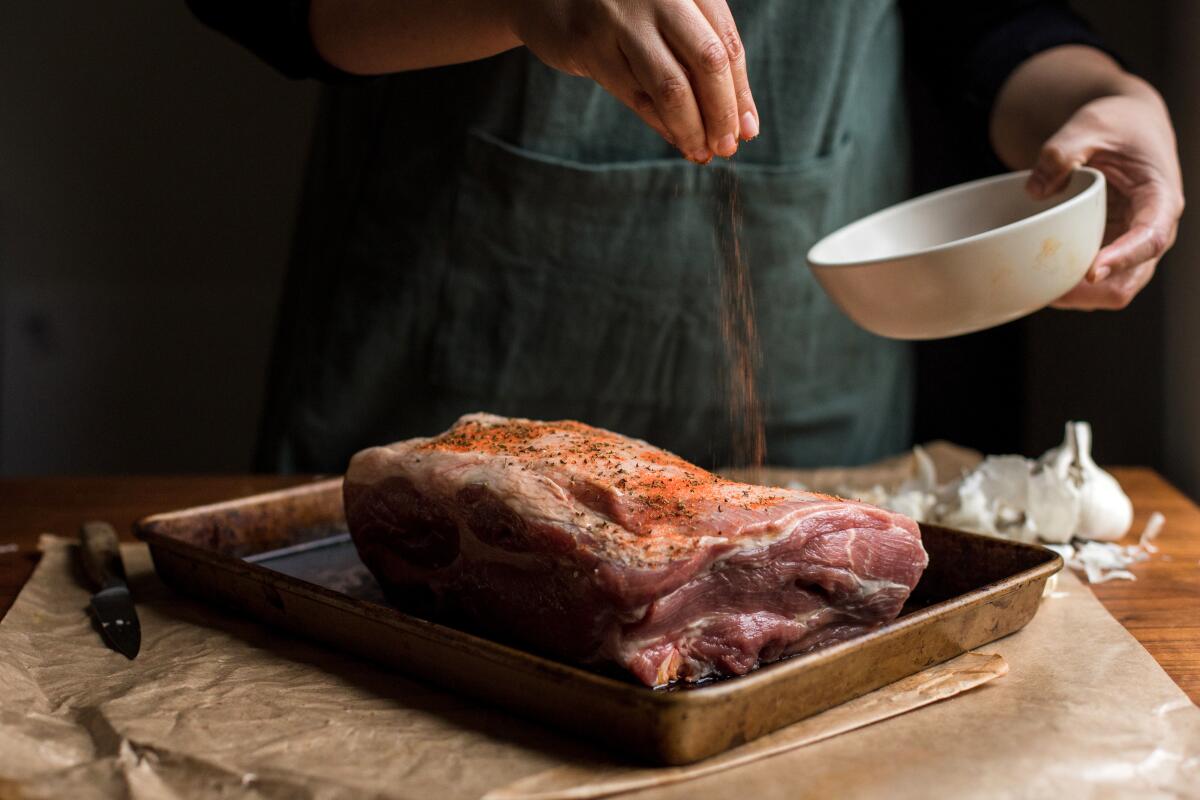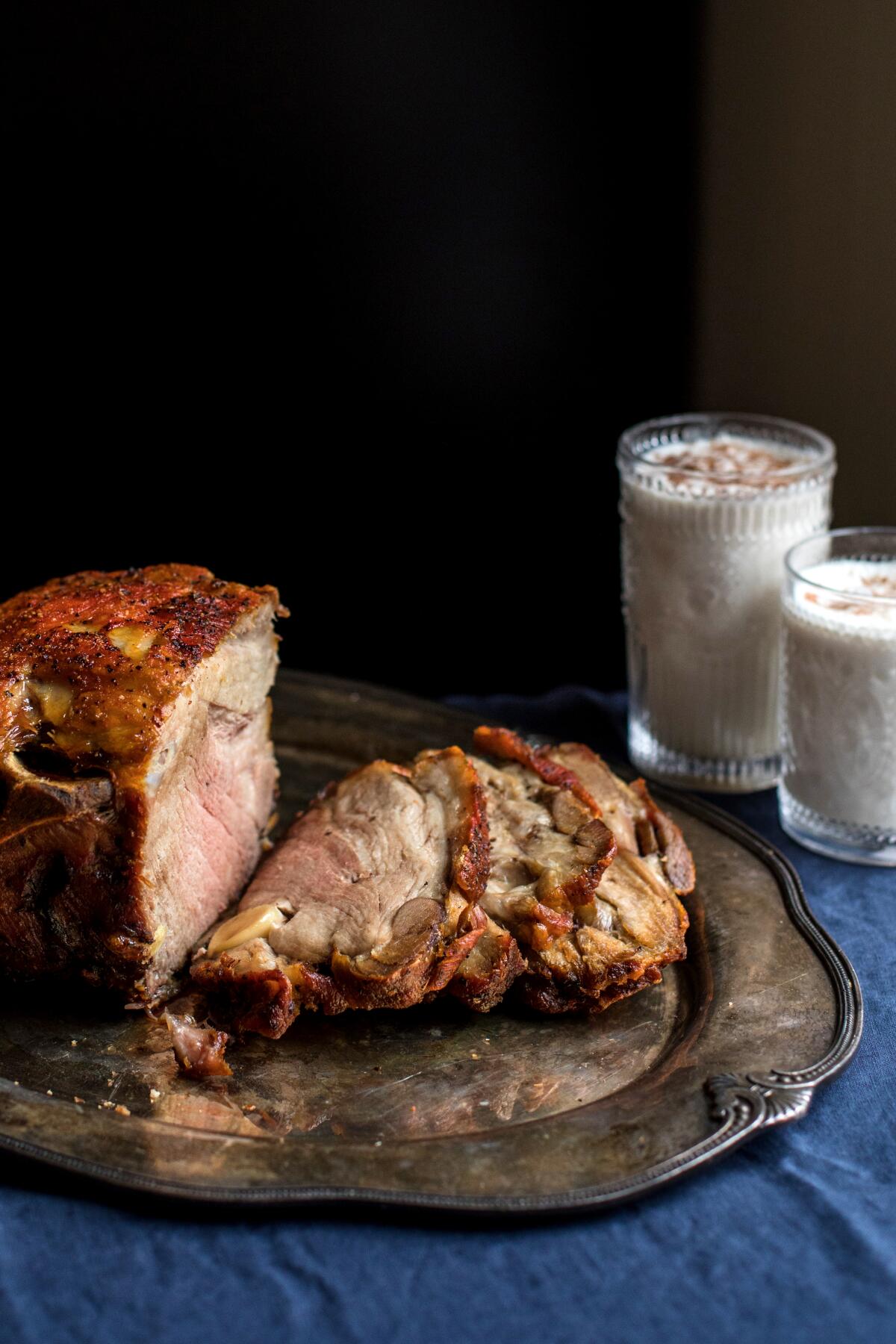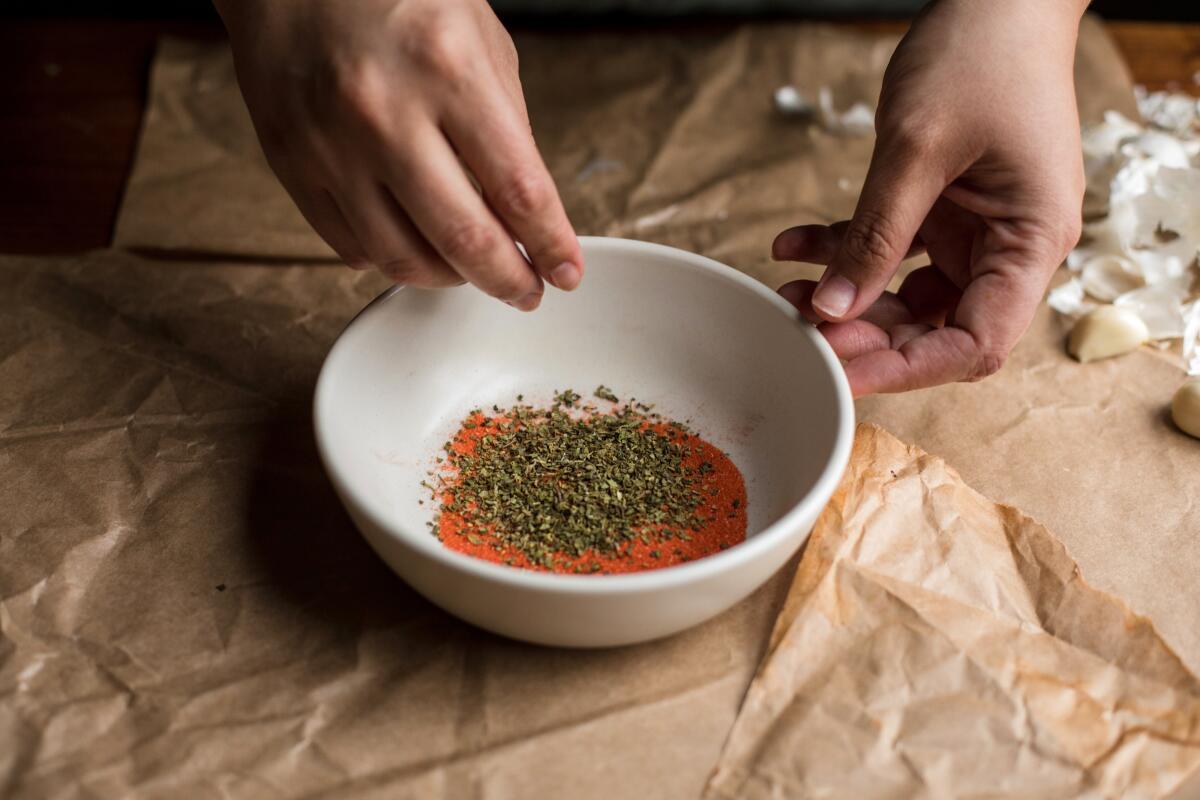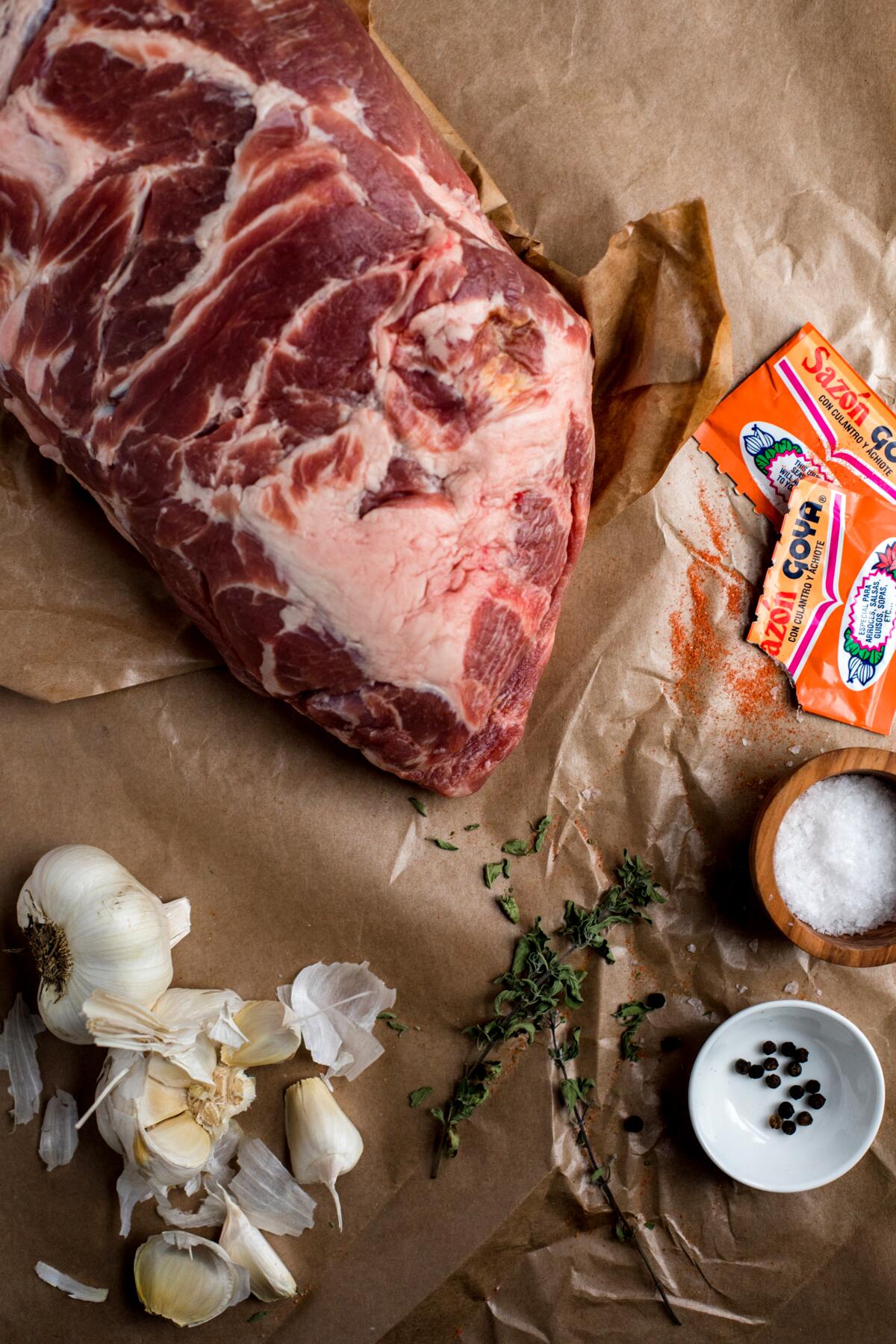For a taste of Puerto Rican Christmas, try the slow-roasted comfort of pernil

- Share via
Pasteles and pernil are how I define Puerto Rican Christmas. And although pork is a fixture on the Puerto Rican table, it is just not Christmas without pernil.
When I was growing up, we’d celebrate at my grandmother’s home in Sacramento. Nana would season the pork roast the day before Christmas Eve: She’d heave the lifeless pink blob of pork on the counter, puncture it all over with the tip of a knife and stuff a clove of garlic into each hole, studding it beyond belief. Then she’d massage it with salt, pepper and a contentious amount of oregano.
The morning of Nochebuena — Christmas Eve, Nana would slowly come down the stairs still in pajamas and turn on the oven. By the time her water was boiling for coffee, it’d be time to put the pernil in.
Later that day, she’d call our house and demand we come over and help her remove the gargantuan pernil and move it over to the aesthetically-ready-for-company pan. We’d drive the one-mile stretch to her house only to find that she had also called Uncle Papo and whoever else would lend a hand.
By the time we’d show up to her calls of distress, there’d be five other people standing in the kitchen ready to assist in freeing the pork from its blackened roasting pan. Then we were trapped and started in on the drinking of eggnog and brown liquor until the cousins all showed up and we all went for a “walk.”

My mom would always spend way too much money on Christmas, ensuring that everyone had a gift and no one felt left out. She’d also buy the same gift in three different colors for my cousins, Shara and Monique, and me. It was her little annual tradition and soon we came to expect it.
Santa would drop by — he was a dude everyone knew from the barrio — and bring us candy canes and Nana would thank him with a shot of brown liquor. Barrio Santa would stop by the houses with the best liquor, music and food. And Nana’s table was always piled high with the greatest hits of Puerto Rican Christmas: pernil, arroz con gandules and pasteles.
Pasteles are made days after Thanksgiving. The parcels of green banana and root vegetables stuffed with achiote-braised pork take days (and a lot of hands) to create. They’re assembled and frozen for a couple of weeks in anticipation of the party to come.
Titis and cousins would start to appear and the laughs, cursing and “La Fiesta de Pilito” by El Gran Combo on vinyl would spill out of the townhouse. And eventually we’d spill out of the townhouse into the parking lot and every surface of cold concrete available directly in front of it, playing football and dominoes and Hungry Hungry Hippos. The love could not be contained in that tiny townhouse.
But that was then.
I heard somewhere that it takes just one generation for a culture to lose its language and food if it’s not taught to the next, we still go through the ritual of making pasteles after Thanksgiving, although I have no one to pass it down to. And we still make pernil.

Other than that, Christmas looks different for us these days. Sometimes it’s just me and my mom sitting together in my childhood home in Sacramento. Once, it was at a casino buffet. Or there was that time we spent Christmas in Puerto Rico.
During the holiday season, the streets of San Juan glitter with strands of Christmas lights decking out buildings from the 1500s and ornate wrought-iron fences. It might take you a while to cross streets because an impromptu parranda of bomberos might be following a truck with oversize speakers blasting cantos de Navidad. They get down in Puerto Rico for Christmas and it’s never hard to find lechon, pernil’s big brother.
If you’re a small family like mine is today or you can’t afford or find room to cook a whole pig, you can use pork shoulder or pork butt (which is often sold as pernil). Pick a small-sized pork shoulder and season it the night before you cook it. You can choose to rub your pork roast with achiote, adobo or sofrito. But you should never leave out the “mucho mucho ajo,” as my Nana used to say. When the house is filled with the smell of it roasting, you’ll know it’s Christmas.

Pernil
6 to 7 hours, largely unattended, plus marinating overnight. Serves 8 to 10.
Ingredients
- 1 whole (5-pound) bone-in pork shoulder or butt
- 10 whole garlic cloves, peeled
- 1 tablespoon everyday olive oil
- 2 tablespoons dried oregano
- 1 tablespoon Goya Sazon Culantro y Achiote (two ¼-ounce packets)
- Kosher salt and freshly ground black pepper
Instructions
- The night before cooking, use a small paring knife to poke 10 holes in your pork shoulder and stuff a garlic clove in each one. Rub the olive oil all over the pork then thoroughly massage the shoulder with oregano and sazon, and season liberally with salt and pepper. Place the pork in a roasting pan and refrigerate, uncovered, overnight.
- Heat oven to 300 degrees. Remove the pork from the refrigerator while the oven heats.
- Roast the pork shoulder, flipping the roast every hour so that it cooks evenly, until the internal temperature reaches 180 degrees, about 5 hours. Raise the oven temperature to 400 degrees. Arrange the pork shoulder skin side up and roast until the internal temperature reaches 195-200 degrees, about 1 ½ hours more.
- Let pork roast rest for about 15 minutes, giving the skin a chance to crisp, before shredding and serving.
More to Read
Eat your way across L.A.
Get our weekly Tasting Notes newsletter for reviews, news and more.
You may occasionally receive promotional content from the Los Angeles Times.









